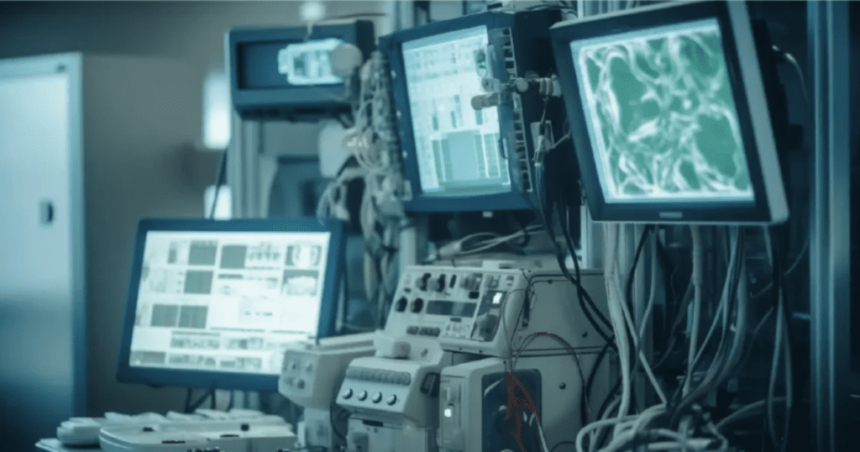Introduction to Luminous Scans
Welcome to the world of cutting-edge technology where innovation meets efficiency – introducing luminous scans! Imagine having the power to see beyond what the eyes can perceive, uncovering intricate details with precision and clarity. In this blog post, we will delve into the fascinating realm of luminous scans, exploring their benefits, functionalities, and applications across various industries. Get ready to be amazed by the transformative potential of this revolutionary imaging technique!
What is a Luminous Scan?
Have you ever wondered how cutting-edge technology can revolutionize the way we perceive and understand our surroundings? Enter the world of luminous scans – a fascinating innovation that is changing the game in various industries. But what exactly is a luminous scan?
A luminous scan is a process that involves using advanced imaging techniques to capture detailed information about an object or environment. By emitting light onto a surface and measuring the reflections, this technology creates highly accurate 3D models and visualizations.
This groundbreaking method allows for precise measurements, analysis, and documentation of spaces or objects with incredible detail and accuracy. Whether it’s for architectural design, industrial inspections, or medical imaging, luminous scans offer unparalleled insights into complex structures and environments.
Stay tuned as we delve deeper into the benefits and applications of luminous scans across different sectors!
How Does a Luminous Scan Work?
Luminous scans work by utilizing advanced imaging technology to capture detailed images of various objects or environments.
These scans typically involve the use of specialized equipment that emits light onto the target, which is then reflected back and detected by sensors. The data collected is processed to generate high-resolution 3D models or reconstructions.
The process relies on the principles of light reflection and absorption, allowing for precise measurements and analysis. By interpreting the information obtained from luminous scans, professionals can gain valuable insights into structures, surfaces, or materials in a non-intrusive manner.
This technology has revolutionized industries such as construction, archaeology, healthcare, and more by providing accurate visual representations for planning, analysis, and documentation purposes.
Benefits of Using Luminous Scans
Luminous scans offer a myriad of benefits across various industries. They provide non-invasive and painless imaging solutions, reducing the need for more invasive procedures. This makes them ideal for patients who may be sensitive to traditional diagnostic methods.
Moreover, luminous scans produce high-quality images with enhanced clarity, allowing healthcare professionals to make more accurate diagnoses quickly. This can lead to earlier detection of potential health issues and improved patient outcomes.
Furthermore, the efficiency of luminous scans helps streamline processes in medical facilities, leading to shorter wait times for patients and increased overall productivity. Additionally, these scans often require minimal preparation compared to other imaging techniques, making them convenient for both patients and healthcare providers alike.
The benefits of using luminous scans extend beyond just medical applications – they have revolutionized imaging technology across multiple industries.
Applications of Luminous Scans in Different Industries
Luminous scans have revolutionized various industries with their versatile applications. In the healthcare sector, these scans are used for early disease detection and monitoring treatment progress. They provide detailed images that help medical professionals make accurate diagnoses.
In the construction industry, luminous scans play a crucial role in assessing structural integrity and detecting potential hazards. By capturing precise 3D images of buildings and infrastructure, engineers can identify weaknesses and plan maintenance or repairs effectively.
The automotive industry benefits from luminous scans by using them for quality control during manufacturing processes. These scans ensure that vehicles meet safety standards and detect any defects before they reach consumers.
In the field of archaeology, luminous scans are utilized to preserve historical sites digitally. By creating virtual replicas of artifacts and ruins, researchers can study them without causing damage to the originals.
Luminous scans continue to push boundaries across different sectors by offering innovative solutions for complex challenges.
The Future of Luminous Scans
As technology continues to advance at a rapid pace, the future of luminous scans looks promising. Innovations in imaging techniques and software development are enhancing the capabilities of luminous scans, making them even more powerful and versatile.
One exciting direction for the future of luminous scans is their potential integration with artificial intelligence. By combining AI algorithms with scan data, researchers and professionals can extract deeper insights and patterns from images, leading to more accurate diagnoses and assessments.
Furthermore, advancements in hardware design are making luminous scanning devices more compact, portable, and affordable. This accessibility will democratize the use of these scans across various industries beyond just healthcare.
In addition to healthcare applications, we can expect to see an increased utilization of luminous scans in fields such as manufacturing quality control, environmental monitoring, archaeology, and many others. The versatility of these scans opens up a world of possibilities for improving efficiency and accuracy across diverse sectors.
The future holds endless opportunities for how luminous scans can revolutionize various industries by providing detailed insights through advanced imaging technologies.
Conclusion
Luminous scans are revolutionizing industries with their advanced imaging technology and precise results. From healthcare to construction, these scans offer a wide range of benefits that improve efficiency, accuracy, and safety in various applications. As technology continues to evolve, the future of luminous scans looks promising as they become more accessible and widely used across different sectors. Stay ahead of the curve by embracing the power of luminous scans in your industry and experience firsthand the transformative impact they can have on your operations.










